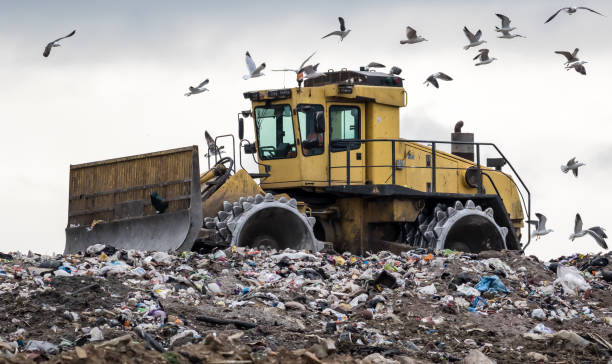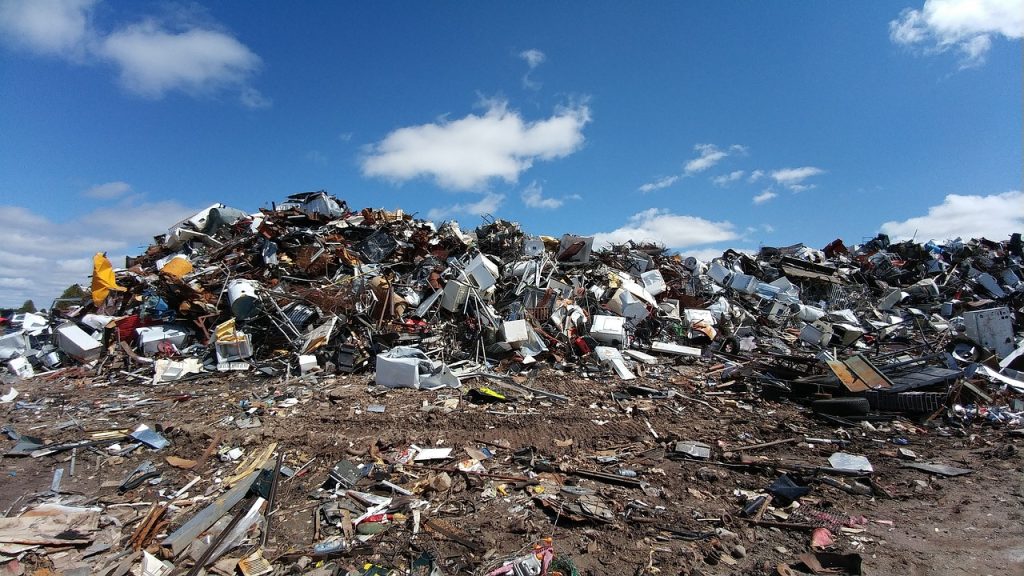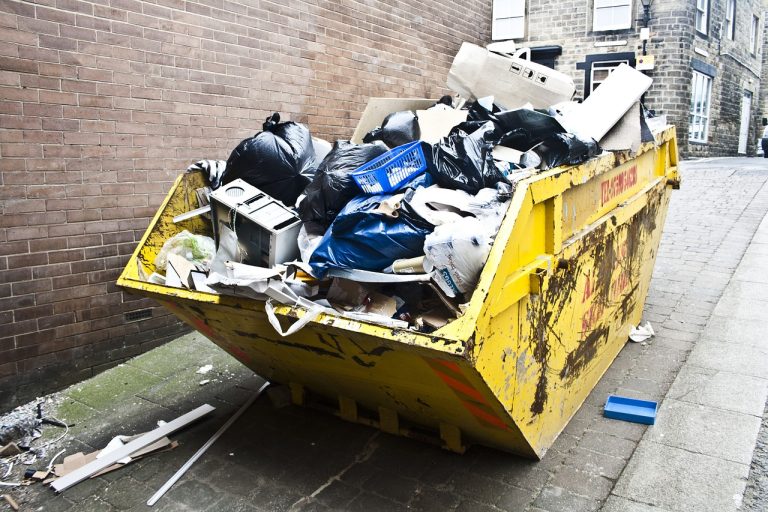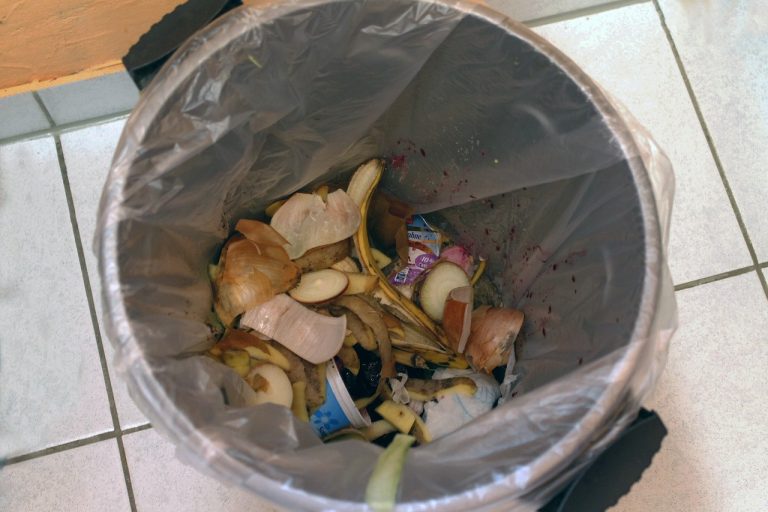How much does it cost to dump at a landfill UK
Introduction
Do you ever ponder the fee for dumping at a landfill in the UK? You’re not alone! Many people want to know how much they’ll pay. Here’s an article that’ll explain the factors of landfill fees – so you can understand the costs.
Councils in the UK charge different rates for landfills. These depend on the type and weight of waste, location, environmental policies, and more. Also, special materials or handling may come with extra fees. It’s wise to ask your local council or waste manager for an estimate.
What’s unique is that many landfills are reaching their limits. Therefore, landfill contractors can charge more due to limited space. So, it’s important to consider other options like recycling or composting to save money and help the environment.
Reducing waste output and recycling is a great way to lower landfill fees and preserve resources for future generations.

Landfill Management in the UK
To manage landfill sites in the UK effectively, it is crucial to understand the key aspects involved. Gain insights into landfill management in the UK with an overview of landfill sites across the country and an exploration of the environmental impact of these sites.
Overview of landfill sites in the UK
Landfill sites in the UK are vital for waste management. They are scattered across the country to process and get rid of waste materials. Here are some key info and statistics about UK landfill sites:
| Facility | Location | Area (hectares) | Capacity (tonnes) | Opening Year |
|---|---|---|---|---|
| Site A | London | 50 | 500,000 | 1998 |
| Site B | Manchester | 35 | 400,000 | 2005 |
| Site C | Birmingham | 40 | 450,000 | 2010 |
Not only these sites, but other landfill sites also exist in the UK. They stick to strict environmental regulations and try to reduce their impact on the surroundings. Plus, monitoring and maintaining them helps to manage waste better and avoid risks.
In the past, landfills were not managed as well as today. There were fewer regulations and controls, leading to worries about pollution and effects on the environment. But, with more knowledge and improved waste management methods, the UK has made great progress in managing landfills sustainably.
To make sure landfills continue to do their job while keeping an eco-friendly approach, the UK set stricter regulations and embraced new techniques such as recycling and energy recovery from waste.
Environmental impact of landfills
Landfills have a huge impact on our environment, which can be damaging and long-lasting. Let’s examine these consequences in more depth.
- Groundwater contamination is one major issue; when waste breaks down, dangerous toxins and chemicals can seep into the soil and contaminate nearby water sources.
- Air pollution is another concern; methane gas, carbon dioxide, and volatile organic compounds are released as waste decomposes, polluting the air and impacting human health.
- Soil degradation results from the accumulation of non-biodegradable materials, making the soil less fertile and contaminating it with chemicals.
- Wildlife is also disturbed by landfills, which attract animals but may also harm them with discarded waste.
- Lastly, landfills can be an eyesore, affecting scenery and tourism potential.
We must take action to lessen the environmental harm caused by landfills. Decreasing waste production, increasing recycling rates, composting, and exploring other waste disposal technologies are essential steps. Furthermore, landfill management has come a long way over time. From early makeshift sites to specialized designs, the focus has shifted towards reducing environmental damage. As our knowledge grows, so does our capability to minimize landfill impacts.

Factors Affecting Landfill Costs
To understand the factors affecting landfill costs in the UK, delve into waste disposal fees and taxes as well as landfill operational costs. Each sub-section sheds light on the financial aspects of dumping waste and maintaining landfill operations. Explore how these factors influence the overall cost of disposing of waste in landfills in the UK.
Waste disposal fees and taxes
Data shows us the varying fees per tonne of waste disposed in different countries. In the UK, it’s 90 GBP, while in Germany it’s 110 GBP. These fees contribute to landfill costs. Plus, some countries also impose taxes or levies on specific types of waste.
It is important for landfill operators to consider these fees and taxes when establishing their pricing structure. Variations between countries illustrate the complex nature of waste management regulations.
Waste Management World magazine reports that waste disposal fees make up around 40% of total landfill operating costs in Europe – so they have a big impact.
Landfill operational costs
Operating a landfill has various costs that need to be managed properly. These costs are known as landfill operational costs. They include a range of expenses for the day-to-day running of the landfill. Let’s take a look at the table below to understand what contributes to these costs.
| Category | Description | Cost (£) |
|---|---|---|
| Waste Collection | Gathering waste from various sources | 50,000 |
| Transport | Moving waste to the landfill site | 20,000 |
| Equipment | Maintenance and repair of machinery used for waste management | 15,000 |
| Personnel | Salaries and benefits for staff involved in landfill operations | 100,000 |
| Regulatory Compliance | Meeting environmental and safety regulations | 30,000 |
| Waste Disposal Fees | Charges for disposing of waste at the landfill site | 75,000 |
These figures show us the different elements that contribute to landfill operational costs. Each category is important in the total expenditure required for an efficient and compliant landfill operation.
It’s worth noting that these numbers might differ, based on factors like the size of the landfill, local regulations, and waste volumes. So, landfill operators must do detailed cost assessments for their own situation.
Pro Tip: Regular maintenance and proper training can help reduce equipment breakdowns and improve operational efficiency, whilst cutting down on landfill costs. Why pay more for landfill costs when you can just bury your money directly?
Pricing Structures and Cost Analysis
To understand the pricing structures and cost analysis of dumping at a landfill in the UK, we explore different pricing models and present case studies on landfill costs. Discover how these sub-sections shed light on the varying approaches to pricing and provide valuable insights into the financial aspects of waste disposal in the UK.
Different pricing models
Let’s take a look at the following table to comprehend these different pricing models:
| Model | Explanation |
|---|---|
| Cost-plus | Price based on production costs with an added markup. |
| Value-based | Price based on the value of product or service to the customer. |
| Time-based | Price based on how long the product/service is used. |
In addition, some companies employ unique strategies. These include dynamic pricing, bundle pricing, freemium models, or subscription-based models. Each of these strategies are tailored to different customers and aim to optimize revenue and profitability.
Interestingly, companies have been using pricing strategies since the past. Gillette is a prime example. In 1901, they introduced the razor and blade model. Razors were sold at reasonable prices, and blades made significant profits. With this model, Gillette revolutionized the shaving industry and other companies followed suit.
Overall, understanding different pricing models can help businesses make informed decisions when setting their prices. By considering production costs, value perception, and customer preferences, businesses can find the right balance between profit and customer satisfaction.
Case studies on landfill costs
Forget landfills! Analyze expenses with case studies. They provide details about the financial aspects of managing landfills. Create a comprehensive table to understand factors impacting costs. Include columns like waste volume, disposal fees, transportation costs, labor expenses, and environmental compliance fees.
Case studies do more than basic analysis. They explore recycling initiatives that reduce waste volume and lower expenses. Also, they emphasize the importance of effective waste management strategies.
Pro Tip: Analyze landfill costs with a cost-benefit analysis. This helps you make informed decisions and contributes to sustainable waste management practices. Spreadsheets and reports can bury your problems!
Alternatives to Landfill Dumping
To explore alternatives to landfill dumping in the UK, delve into recycling and waste reduction initiatives as a solution. Additionally, consider energy recovery from waste as another alternative.
Recycling and waste reduction initiatives
To fight recycling and waste reduction, many initiatives have been put in place. Here are five noteworthy ones:
- Source separation: People and businesses are asked to separate recyclable materials from general waste, so resources can be recovered and reused.
- Composting: Food scraps and garden trimmings can be composted instead of thrown away. This reduces greenhouse gases and produces nutrient-rich soil for agriculture.
- Extended producer responsibility: Companies are held responsible for the entire lifecycle of their products, from production to disposal. This helps reduce waste generation by promoting sustainable product design and recycling programs.
- Waste-to-energy technologies: Non-recyclable materials can be converted into energy through processes like incineration or anaerobic digestion. This generates electricity or heat with minimum environmental impact.
- Education and awareness campaigns: To promote behavioral change, educational initiatives are used to teach the importance of recycling and waste reduction.
Robotics are making waves in the recycling and waste reduction world, streamlining sorting processes and improving efficiency and accuracy.
In the late 20th century, environmental concerns about landfilling led to governments implementing regulations and supporting sustainable waste management practices. We’re still researching and developing for a greener future.
Energy recovery from waste
Let’s look at energy recovery from waste! Incineration burns waste materials to produce heat and electricity. Anaerobic digestion breaks down organic waste to produce biogas. Gasification converts carbon-based material into synthetic gas. Pyrolysis thermally decomposes organic materials. Landfill gas collects and uses methane from landfills.
Innovative methods can also recover energy from waste. Plasma gasification uses an electric arc to turn it into synthesis gas. Hydrothermal carbonization uses high pressure and temperature to make solid fuel from wet biomass.
To get more from waste, introduce stricter recycling programs. Governments can incentivize the development of advanced technologies. Research and investment can unlock the energy in our waste streams, leading to a greener future.
Conclusion
When it comes to dumping waste in the UK, costs can vary. However, it’s important to consider the environmental effects and explore other solutions. To reduce landfill waste and lower expenses, recycling and composting are great options.
Dumping non-biodegradable waste has several negative impacts. It can lead to greenhouse gas emissions and pollute groundwater. That’s why it’s crucial to think of the long-term consequences when deciding how to dispose of waste.
In the UK, regulations guide waste management practices. They ensure proper disposal, prevent pollution, and encourage recycling. Individuals and businesses must follow these rules and explore sustainable alternatives, like waste-to-energy technologies.
Take the example of a small business owner in London. They realized the need for eco-friendly practices and implemented a recycling program. By properly sorting recyclables and reducing landfill waste, they saved money and improved their public image.







